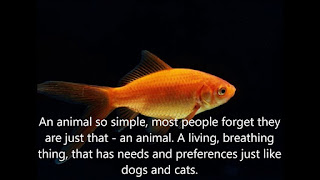Feeder fish is the generic name for certain types of inexpensive fish commonly fed as live prey to captive animals such as sharks, turtles and some other fish, such as oscars.
Video Feeder fish
Advantages of using feeder fish
The species of fish usually sold as feeder fish are invariably some of the easiest fish for fishkeepers to rear and breed, such as common goldfish and guppies. Typically, these species are tolerant of overcrowding and have a high fecundity and rapid growth rate. This makes it easy for fish farmers, retailers, and hobbyists to maintain large populations of these fish that can be sold at a much more affordable price than the more delicate ornamental fish that require better conditions.
In some cases, species of predatory animals, typically large fish such as catfish and cichlids but sometimes also animals such as freshwater turtles, are provided with feeder fish because they accept them more readily than alternatives. Other animal keepers believe that feeder fish are particularly nutritious, being what their pets would eat in the wild. Still others view feeder fish as a stimulating treat that encourages predatory animals to exhibit their natural hunting behaviours. Some animal keepers enjoy watching the hunting and eating techniques involved when one animal eats another.
Maps Feeder fish
Disadvantages of using feeder fish
Some aquarists view the use of feeder fish as cruel and unnecessary, arguing that once the feeder fish is introduced into a small tank it has no chance to escape, and such a contrived situation cannot be considered "natural" in any meaningful sense. Most predatory species that eat live fish can also be weaned onto dead alternatives. Some of the species used as feeder fish (goldfish and rosy red minnows) contain high quantities of thiaminase, an enzyme that destroys vitamin B1 and when fed in large quantities causes nutritional imbalances. When bred and held in an overcrowded or otherwise sub-optimal environment, they may also carry bacterial infections and parasites, which can be passed along to fish that eat them. A major disadvantage of using feeder fish, particularly goldfish, is that they do not actually simulate what tropical fish eat in the wild.
Species use
Several fast-growing and hardy species are commonly sold and used as feeder fish. Depending on the locality, feeder fish may include:
- Low-quality, common livebearers, usually guppies, mosquito fish and platies
- Small cyprinids, particularly rosy red minnows and goldfish
- Unwanted livebearer and cichlid fry
- Female Siamese fighting fish
- Young tilapia
- Defective and weak fry
- Young Bluegill
Opinions within the hobby
Although the use of feeder fish is fairly common in the United States, in the United Kingdom it is much less common, with aquarists and hobby magazines in Britain generally rejecting the use of feeder fish as being unnecessary and likely to cause health problems.
See also
- Aquarium fish feeder
- Forage fish
- Bait fish
References
Tristan Gordon The Use of Live Feeder Fish in Saltwater Aquariums
External links
- Feeder Fish Mini-FAQ, the pros and cons Review of the merits and problems of using feeder fish
Source of article : Wikipedia

